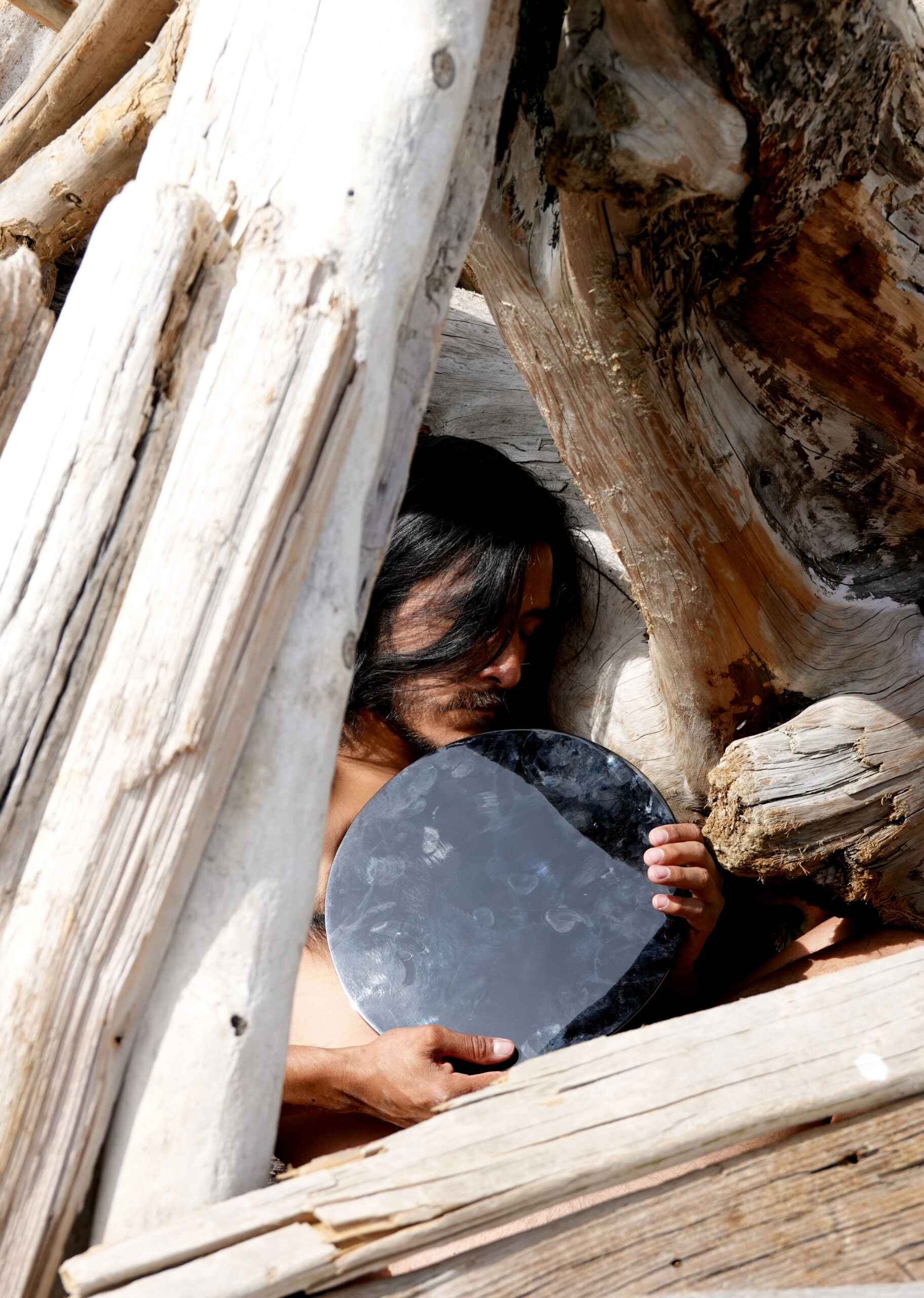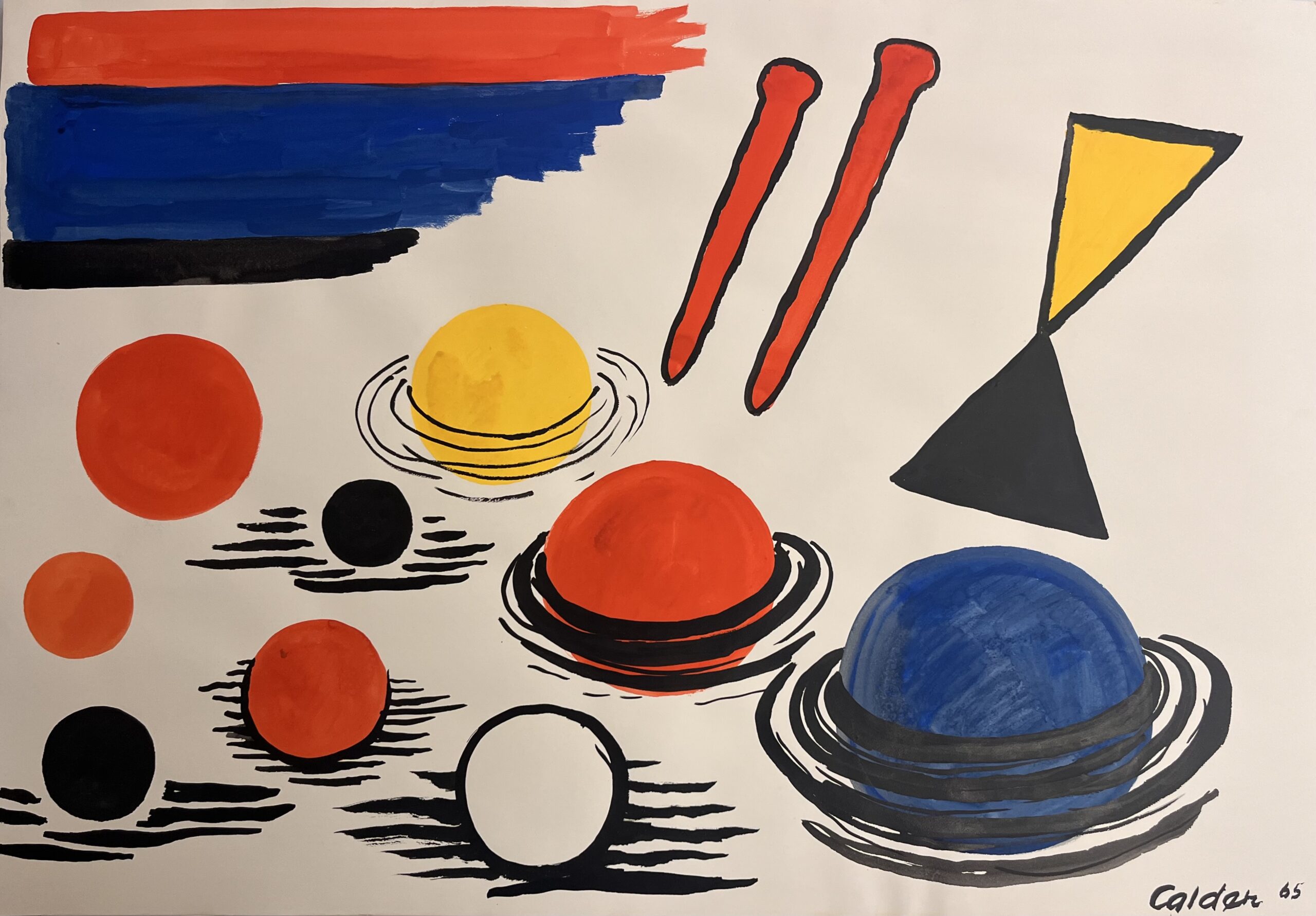By Audrey Wang, AGGV Volunteer
Collecting is often regarded as a fundamental and universal human instinct and an activity shared by all cultures around the globe. The history of collecting has been written in great detail by many scholars, and include the cultures of ancient Greece and Rome, medieval and Renaissance Europe, Edo Japan, the Ming and Qing dynasties of China, and many others. In every instance, the relationship between human and object points towards a social order.
In collecting art, numerous reasons abound for the impetus behind this activity. Museology expert Stephen Weil writes, “Although every collector has a distinctive style [of collecting], all of those styles still combine a unique mix of passion, instinct, and impulse, on the one hand, and caution, deliberation, and calculating connoisseurship on the other.” (Stephen Weil, Making Museums Matter, Washington: Smithsonian Institution Press, 2002, p. 141)
Featured above: Mark Tobey | Landscape | 1957 | Tempera and gouache on paper | Women’s Committee Cultural Fund; Mark Tobey Estate/Seattle Art Museum, 1957.027.001
The AGGV relies heavily on the goodwill and philanthropy of collectors. In the early years of the Gallery’s existence, director Colin Graham collected for the Gallery’s permanent collection by building relationships with art collectors in Victoria, appealing to them to help establish the Gallery through donation. Graham’s passion for seeing a collection held in public trust for the citizens of British Columbia impressed many donors, helping him secure several good collections. In particular, Graham’s great achievement was initiating the Asian art collection with the help of collectors he worked with closely.
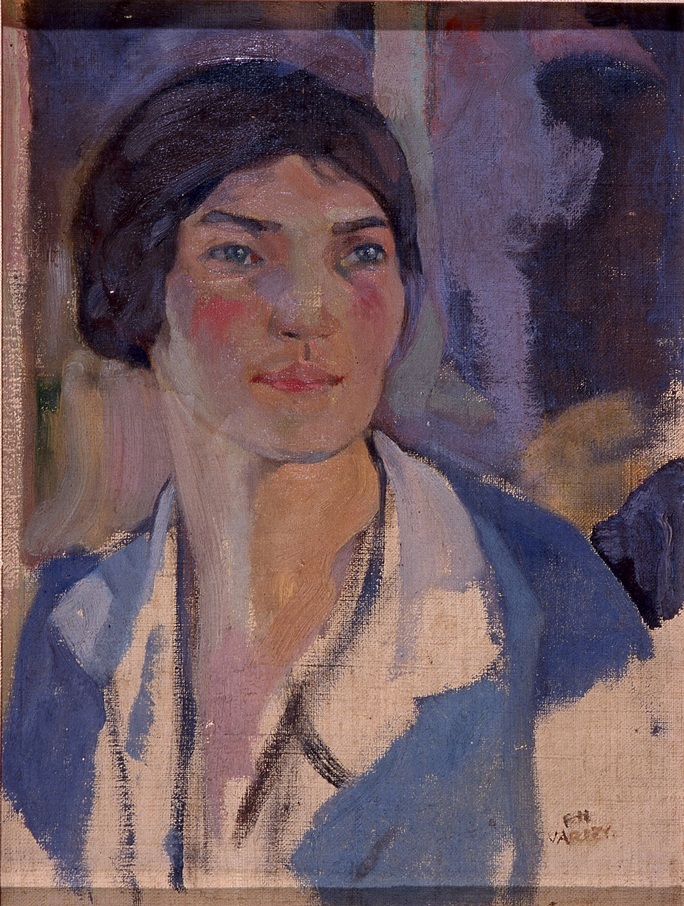
A consistent and respectful relationship between Graham was upheld with Harold Mortimer-Lamb (1872-1970), a Vancouver-based artist, photographer, and collector. Mortimer-Lamb donated many valuable assets to the AGGV, including works by Millet, Whistler, Fred Varley and A.Y. Jackson, among others, as well as Chinese and Japanese works of art. After his death, the Gallery received half the proceeds of Mortimer-Lamb’s estate. Currently on show in the exhibition Moving Forward By Looking Back, are examples of works that portray Mortimer-Lamb as both artist and patron.
Portrait of Viola Pratt by Fred Varley was a gift to the AGGV from Mortimer-Lamb. Mortimer-Lamb championed Varley and was instrumental in bringing him to Vancouver in 1926 from Ontario, acting as his primary patron. Varley’s ten years in Vancouver are considered the high point of his career.
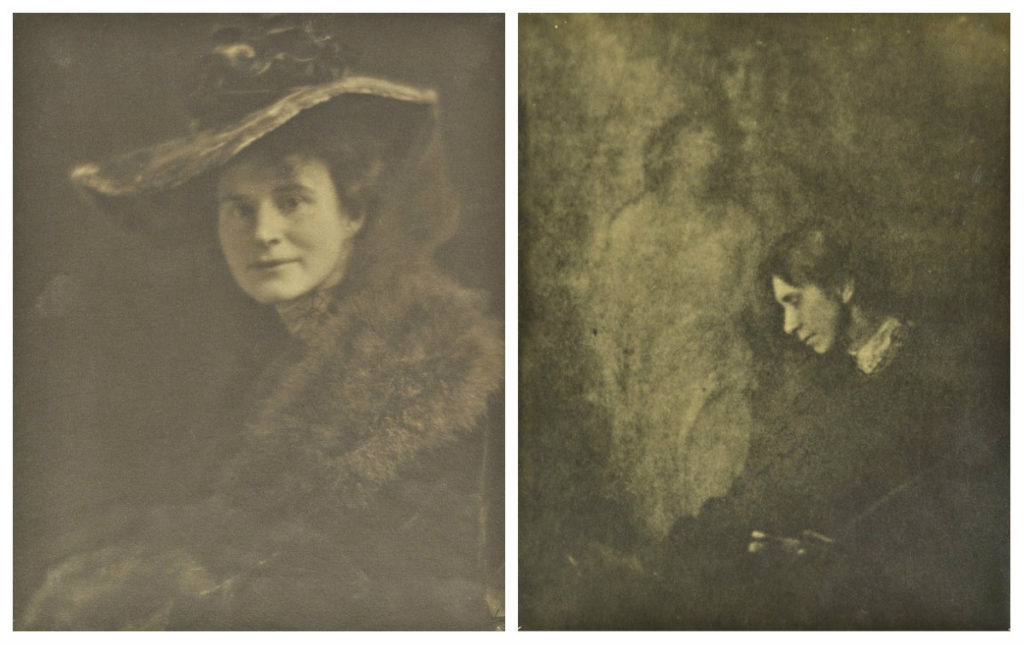
Mortimer-Lamb was also a leading artistic photographer in Canada, producing pictures in a style known as Pictorialism, which married soft-focus photography with symbolic intent. His sitters included many artists who were also his friends. In Moving Forward By Looking Back are two photographic portraits by him, one of Sophie Pemberton (whose work is also on exhibit) and the other of Laura Muntz, a painter often associated with Pictorialism.
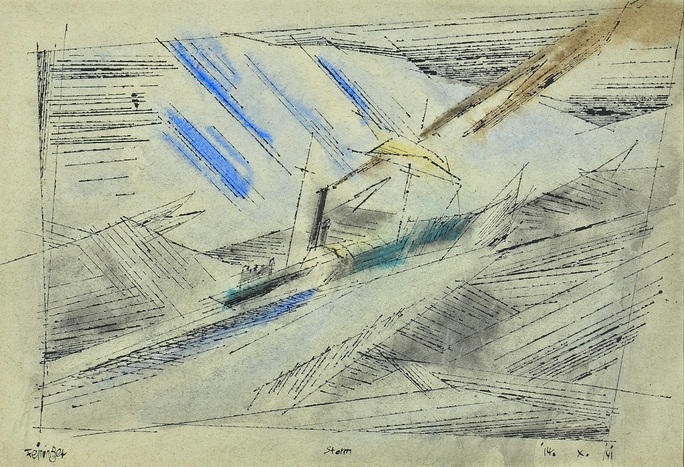
The AGGV is also fortunate to have had the American painter Mark Tobey (1890-1976) as a generous donor to the Gallery’s permanent collection. Born in Wisconsin, Tobey moved to Seattle in 1922, where he met Emily Carr at the 1924 Artists of the Pacific Northwest exhibition. In 1928, Tobey traveled to Victoria to teach at Carr’s studio and was a strong influence in the development of her artistic style. As an exponent of the Pacific Northwest school, Tobey was at the forefront of the artistic movement in Seattle and attracted the attention of the AGGV’s Colin Graham, who invited Tobey and his colleagues to exhibit at the Gallery in the 1950s. A relationship was established, with Tobey’s work and his donations eventually forming an important part of the permanent collection at the AGGV.
It is impossible to discuss the AGGV’s permanent collection without a mention of its Asian art collection, one of the most distinguished in Canada. The Asian collection is extensive, encompassing all aspects and periods of Asian art, and representative of the many nations on the Asian continent – China, Japan, Korea, Central Asia, India and Southeast Asia. Asian art entered the AGGV’s collection from the very start of the Gallery’s history of acquisition, and Colin Graham was keen to grow the holdings of this category of art. As before, Graham relied on the generosity of donors.
To carry on the relationships, Barry Till, the Curator of Asian Art, has been crucial in both continuing Graham’s work and widening this circle of connoisseur-donors. Over the past 35 years under his stewardship, the Asian Art collection is now home to one of Canada’s most important Asian art collections, second only to the Royal Ontario Museum. Till has organized over 200 exhibitions on Asian art at the AGGV – several of which have traveled throughout Canada and the US.

Among the major donations of Asian art to the Gallery is that from the Menzies family Of Ontario. Rev. Dr. James M. Menzies (1885-1957) was a Canadian Presbyterian missionary in China from 1913 to 1936. He was also an amateur archaeologist with special interests in oracle bones. During his time in China, he acquired a wide variety of archaeological artifacts and Buddhist art, in an effort to connect his missionary work with an understanding of the religious beliefs of China. After his death in Ontario in 1957, his collection of Chinese antiquities was inherited by his children, and over the years, it was donated to both the Royal Ontario Museum and the AGGV.
Many rare and important works of Chinese and Japanese art in the AGGV’s permanent collection came from the Menzies collection, donated by Rev. Menzies’ descendants, including his son Arthur R. Menzies who was Canada’s ambassador to China in the 1970s and 80s. Several such items of rarity are currently on exhibit in the show Millennia: Asian Art Through the Ages, which runs until April 2. Of significance is a Buddhist handscroll from the Dunhuang caves in China, dated to 869 CE, and the oracle bones which were used as a form of divination during the late Shang dynasty (16th-11th century BCE). The inscribed pictograms or characters on the bones are the earliest form of Chinese writing.

Right: Blue and white baluster vase | Mexican, 17th century | Gift of Foster & Constance Isherwood, 2010.032.002
The AGGV counts Foster and Constance Isherwood among the many donors to the permanent collection. The Isherwoods gave the Gallery pieces of decorative works of art from Mexico, Germany, and Asia. Not only did they give the Gallery property, but also their time for community work. Foster Isherwood (1922-2011) was Vice-President of the AGGV. Foster and Constance (née Holmes) practiced law together in the partnership of Holmes & Isherwood that they founded in 1964. Constance Isherwood continues to practice law today. In October 2016, she received the Law Society of B.C.’s highest honour for lifetime achievement, at the age of 96.

